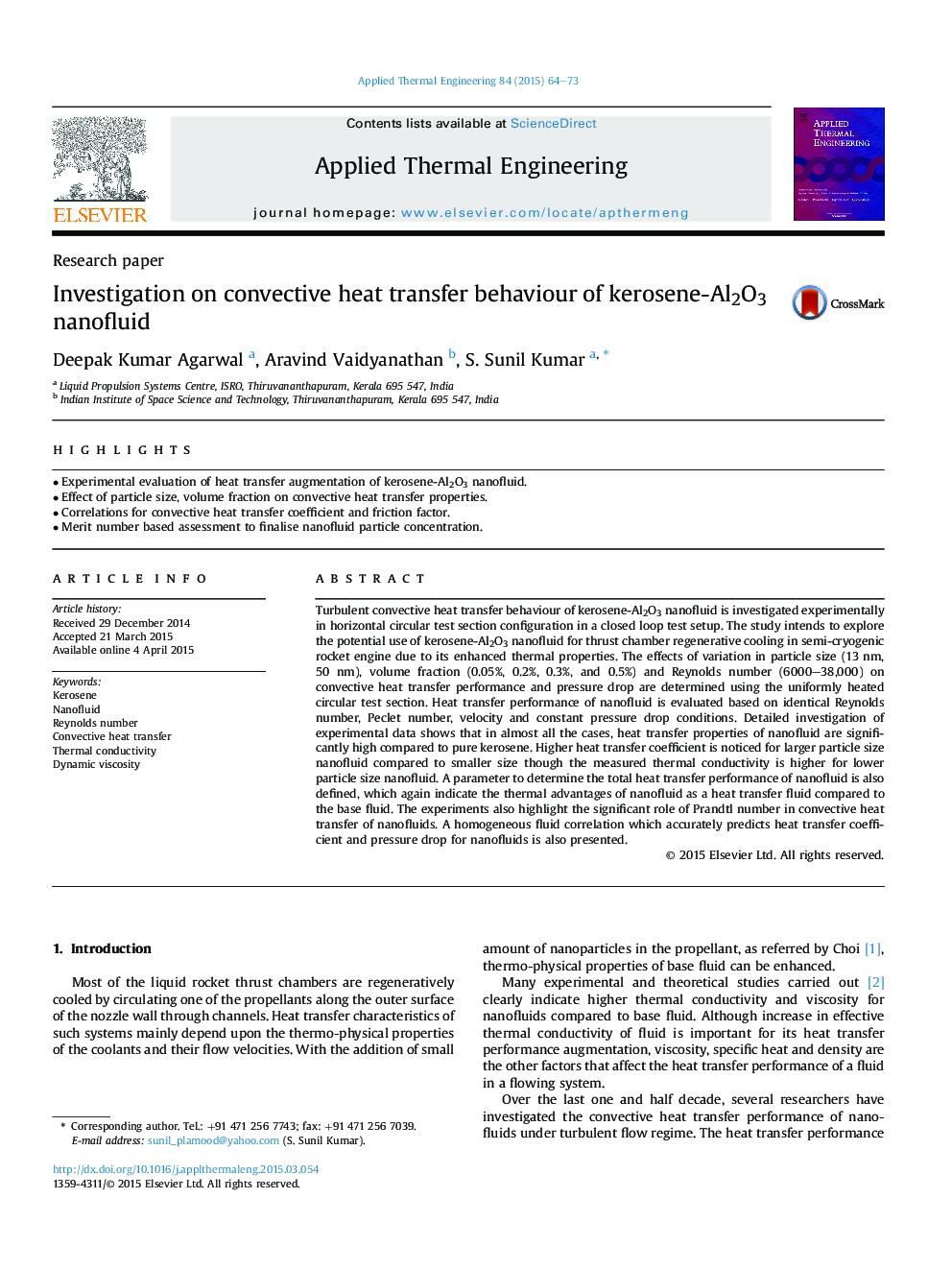| Article ID | Journal | Published Year | Pages | File Type |
|---|---|---|---|---|
| 645556 | Applied Thermal Engineering | 2015 | 10 Pages |
•Experimental evaluation of heat transfer augmentation of kerosene-Al2O3 nanofluid.•Effect of particle size, volume fraction on convective heat transfer properties.•Correlations for convective heat transfer coefficient and friction factor.•Merit number based assessment to finalise nanofluid particle concentration.
Turbulent convective heat transfer behaviour of kerosene-Al2O3 nanofluid is investigated experimentally in horizontal circular test section configuration in a closed loop test setup. The study intends to explore the potential use of kerosene-Al2O3 nanofluid for thrust chamber regenerative cooling in semi-cryogenic rocket engine due to its enhanced thermal properties. The effects of variation in particle size (13 nm, 50 nm), volume fraction (0.05%, 0.2%, 0.3%, and 0.5%) and Reynolds number (6000–38,000) on convective heat transfer performance and pressure drop are determined using the uniformly heated circular test section. Heat transfer performance of nanofluid is evaluated based on identical Reynolds number, Peclet number, velocity and constant pressure drop conditions. Detailed investigation of experimental data shows that in almost all the cases, heat transfer properties of nanofluid are significantly high compared to pure kerosene. Higher heat transfer coefficient is noticed for larger particle size nanofluid compared to smaller size though the measured thermal conductivity is higher for lower particle size nanofluid. A parameter to determine the total heat transfer performance of nanofluid is also defined, which again indicate the thermal advantages of nanofluid as a heat transfer fluid compared to the base fluid. The experiments also highlight the significant role of Prandtl number in convective heat transfer of nanofluids. A homogeneous fluid correlation which accurately predicts heat transfer coefficient and pressure drop for nanofluids is also presented.
